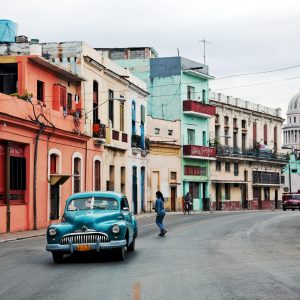A tourist’s guide to Cuba’s dual currency system
posted in Calforex Blog
 Visiting Cuba for the first time? Lucky you! A little confused about their dual currency system? Here is a rundown on what you should know to get you on your way to a great vacation.
Visiting Cuba for the first time? Lucky you! A little confused about their dual currency system? Here is a rundown on what you should know to get you on your way to a great vacation.
The two currencies used in Cuba are the Cuban peso (CUP or moneda nacional) and the Cuban convertible peso (CUC). The first is the currency in which Cubans are paid from the state and is used to buy staple goods and non-luxury items like groceries from government-run stores. The second currency in use – introduced in 2004 to replace the US dollar after it was pulled from circulation in Cuba – is used mainly for tourists and to purchase luxury items sold in privately-run businesses. That is not to say that you cannot use CUP, but the majority of your purchases will be done with CUC. Tipping is also always done in CUC. Locals use also CUC to buy items not available for purchase through CUP.
Neither of the Cuban currencies trade internationally, therefore you cannot buy them outside of Cuba. By the same token, you must exchange them back before you leave as they are worthless outside of the country (and they’re not technically supposed to be taken out either). According to wikitravel, “…as of July 2016, the only available currencies to convert from CUC at the airport were USD and the Euro.” So if you want to receive Canadian dollars back from any leftover pesos, you should do it before heading to the airport.
Canadian dollars are easily traded for CUC at the airport, bank, or cadeca (exchange bureau). You will need your passport and the bills must be in good condition. Coins are not accepted, including loonies and toonies. Exchange rates are set by the Cuban government and there is a standard 3% surcharge for an exchange on any currency. You can also exchange money at your hotel or resort, but you will likely pay a higher price for the transaction there.
The CUC is pegged to the United States dollar (USD), meaning that 1 USD = 1 CUC. For Canadians, that means that the exchange rate to buy CUC is essentially the same as it would be if you were to buy USD. In other words, 1 CAD = 0.74 USD, and 1 CAD = 0.74 CUC (at the time this article was written), not including the 3% surcharge. Exchanges made from USD are subject to an additional 10% tax on top of the 3%. So after the surcharge and tax, 1 USD is actually equal to 0.87 CUC and 1 CAD ends up being about 0.71 CUC. Just to be clear, although 1 CAD doesn’t get you as many pesos as 1 USD, it is still cheaper to pay in Canadian dollars. This is because you would first have to buy the USD, pay the 10% tax, and make two conversions.
As mentioned earlier, the majority of tourists visiting Cuba will only ever use CUC. This is because anything outside of staple goods as well as most restaurants, bars, and night clubs all require CUC. Goods available for purchase in CUP have government-controlled prices and tend to be lower quality. Basically, the CUC has better buying power and there are a limited number of things you can buy with CUP. However, it can be handy to carry some around with you for things like street food, or if you’re going off the beaten track. You can purchase CUP at the bank or exchange bureau. The exchange is about 1 CAD = 16 CUP and 1 CUC = 23 CUP (at the time this article was written), which includes the surcharge. Although the market exchange for pesos is as such, the government considers 1 CUP = 1 CUC. So sometimes you will see prices listed 1:1 and other times it will be 1:23.
Cuba is a cash-based society, so the majority of your purchases will be made in cash. Only places like major hotels accept credit cards. Although things are slowly changing, bank machines are not as prevalent in Cuba as they are in North America, so keep that in mind when you are deciding how much cash to bring with you. Make sure to notify your bank of your intended travel plans before you go to avoid having your bank card frozen.
Related: Safety tips for carrying cash while on vacation
Finally, make sure that you know what the two currencies look like and always check your change. You could get scammed by receiving the less-valuable CUP back in change when paying in CUC. Click here to see what CUP looks like and click here to see what CUC looks like. Have a calculator handy to know how much you should be getting when making a money exchange and ask for a receipt. Never exchange your money on the street. Happy travels!
